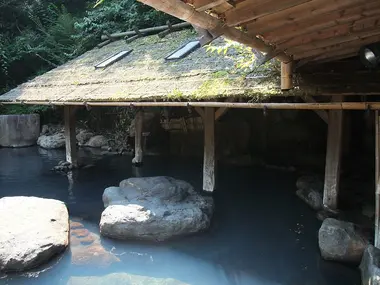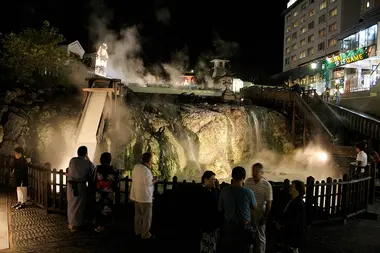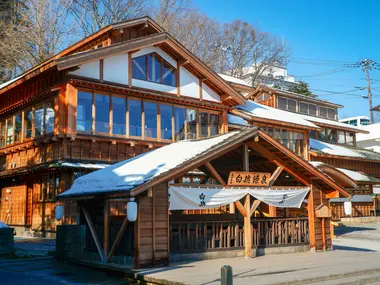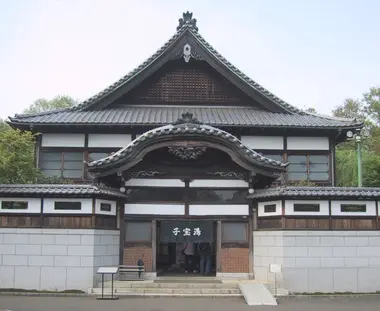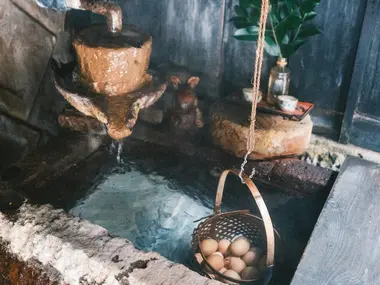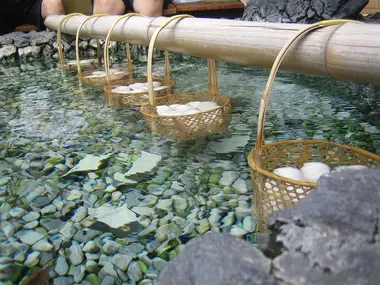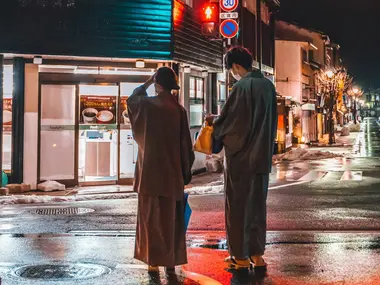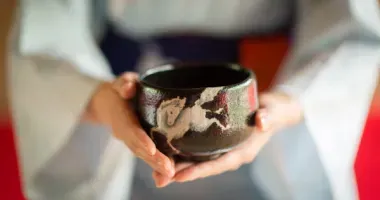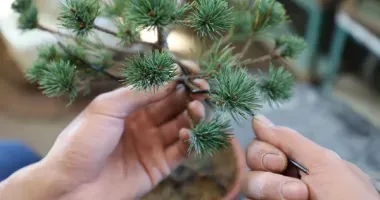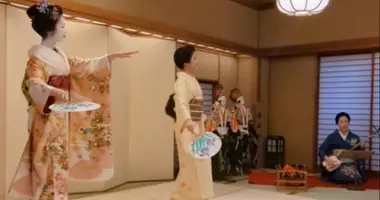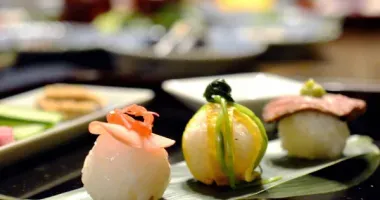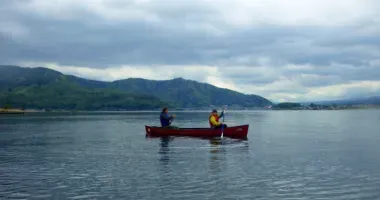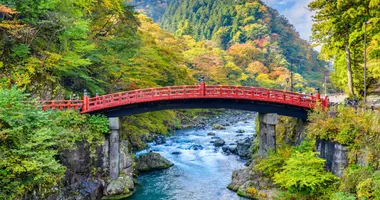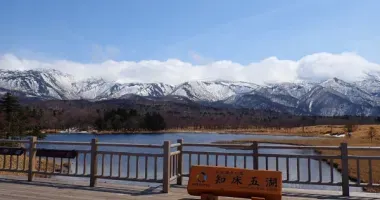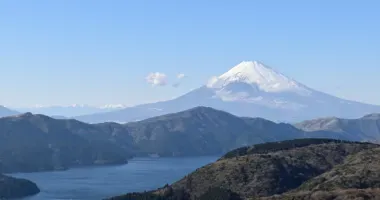Onsen in Japan: A Guide to Natural Hot Springs and Relaxation
What are onsen and why are they popular in Japan?
Onsen, meaning "hot springs" in Japanese, are natural springs heated by geothermal activity beneath the earth's surface. With over 27,000 hot springs scattered across the archipelago, Japan boasts a rich history and culture surrounding these mineral-rich baths that spans centuries. Soaking in an onsen is not only a beloved way to relax and unwind but also famous for its therapeutic benefits, attracting visitors from across the globe.
The tradition of onsen bathing is deeply ingrained in Japanese culture. Originally established as health retreats, these hot springs have evolved into a top tourist draw and significantly shaped the country's bathing practices. Families, couples, and friends often embark on weekend getaways to onsen towns - locations with a high concentration of hot springs and bathing facilities - to indulge in the healing waters and escape the stresses of daily life.
Types of onsen and their unique mineral compositions
Japan's onsen are classified into various types based on their mineral composition. The 19 designated chemical elements that define an onsen each offer different health benefits, colors, and even smells to the waters.
Some of the most common onsen types include:
- Sulfur onsen (硫黄泉), known for their distinct odor and milky appearance, are believed to aid in treating skin conditions and arthritis.
- Sodium chloride onsen (ナトリウム泉) have a salt content similar to seawater and are said to promote heat retention and alleviate muscle pain, cuts, and burns.
- Iron onsen (鉄泉) are characterized by a rusty color and are thought to combat anemia when consumed.
- Carbonated onsen (炭酸泉) are naturally bubbly and feel soft on the skin, offering benefits for skin ailments.
- Radium onsen (ラジウム泉) contain trace amounts of radioactive elements that may help lower blood pressure and relieve gout or circulatory issues.
The combinations of minerals in each onsen create unique soaking experiences and are frequently advertised as part of their allure.
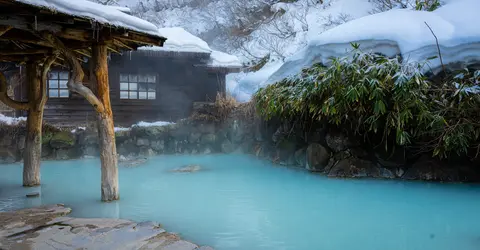
Onsen Japan
Health benefits of soaking in onsen
Onsen have long been revered for their restorative properties, with the mineral-rich waters offering myriad health benefits. The heat of the water, which must be at least 25°C (77°F) to be classified as an onsen, promotes blood circulation and increases the body's metabolism.
The absorption of minerals through the skin is thought to further enhance onsen's positive effects. Sulfur may aid in treating skin conditions like eczema or psoriasis, while carbonic acid can lower blood pressure. Many onsen are lauded for their ability to soothe aching muscles, alleviate joint pain, and promote better sleep.
Soaking in an onsen also offers mental health benefits. The serene atmosphere and calming ritual of bathing can melt away stress, providing a meditative and rejuvenating experience that refreshes both body and mind.
Varieties of onsen experiences: indoor, outdoor, traditional and modern
Onsen come in a wide array of styles, catering to different preferences and offering varied ambiances. Traditional onsen are often housed within rustic wooden structures, featuring classic elements like shoji screens and stone baths. Modern facilities may boast sleek, minimalist designs with state-of-the-art amenities.
Many onsen offer both indoor baths (内湯, uchiyu) and outdoor baths (露天風呂, rotenburo). Indoor baths range from intimate, dimly-lit spaces to expansive bathing halls with multiple pools. Outdoor baths allow visitors to soak while immersed in nature, surrounded by lush greenery, rugged rocks, or even perched on a cliffside with ocean views.
Some onsen facilities provide additional features such as saunas, cold plunge pools, or waterfalls that massage the shoulders and back. Unique experiences like sand baths, where bathers are buried in naturally-heated sand, or steam rooms fed directly by the hot springs offer alternative ways to reap the benefits of the geothermal waters.
Where to enjoy onsen: ryokan, hotels and public bath houses
Onsen can be enjoyed in various settings, from traditional ryokan inns to modern hotels and public bathhouses. For the quintessential onsen experience, staying at a ryokan is highly recommended. These Japanese-style inns often feature on-site hot spring baths, allowing guests to soak at their leisure. Some ryokan even offer private open-air baths connected to guest rooms for the ultimate in privacy and luxury.
Many hotels and resorts in onsen towns also boast their own hot spring facilities, catering to visitors who prefer more Western-style accommodations. These range from simple baths to extensive spa complexes with multiple pools, saunas, and massage services.
For a more casual experience or day trip, public bathhouses (銭湯, sento) are a great option. Found in most cities and towns, sento offer a chance to soak in onsen waters without the need for overnight stays. Some popular onsen towns like Kinosaki even provide passes that allow visitors to hop between several different public baths to sample a variety.
Etiquette and tips for bathing in onsen
Bathing in an onsen involves following certain etiquette and customs to ensure a pleasant experience for all. Most importantly, bathers must thoroughly cleanse their bodies before entering the hot spring waters. Bathing areas are typically equipped with showers, stools, and toiletries for this purpose.
Onsen are enjoyed nude, with clothing and swimsuits prohibited in the bathing areas. Male and female baths are usually separated, although some traditional onsen may offer mixed-gender bathing. A small towel is used for modesty when walking between the changing room and bath, but should not be submerged in the water.
Bathers with long hair should tie it up to avoid contaminating the waters, and it is considered impolite to let your head go underwater. Conversation should be kept quiet, and alcohol consumption before bathing is discouraged due to the risk of overheating or fainting.
When in doubt, observe and follow the lead of other bathers or don't hesitate to ask staff for guidance. By adhering to proper etiquette, visitors can fully immerse themselves in this beloved aspect of Japanese culture.
Top onsen destinations in Japan
Japan abounds with onsen towns, each offering its own unique charm and specialties. Some of the most renowned destinations include:
- Kusatsu Onsen (Gunma): Known for its high-volume, highly acidic springs and iconic yubatake where the water is cooled.
- Beppu Onsen (Oita): Famed for its "hells" or multi-colored pools, as well as abundant steam baths and sand baths.
- Hakone (Kanagawa): Easily accessible from Tokyo, offering stunning views of Mount Fuji from its many outdoor baths.
- Kinosaki Onsen (Hyogo): A picturesque town with seven public bathhouses and a charming, traditional atmosphere.
- Ginzan Onsen (Yamagata): A secluded, historical town with ryokan lining a river, creating an enchanting ambiance.
- Dogo Onsen (Ehime): One of Japan's oldest hot springs with an iconic, three-story bathhouse said to have inspired Studio Ghibli's "Spirited Away".
These are just a few of the many onsen destinations waiting to be discovered, each promising a rejuvenating escape and a deep dive into one of Japan's most cherished traditions.
Combining onsen visits with other Japanese cultural experiences
A visit to an onsen can easily be combined with other quintessential Japanese experiences for a well-rounded and immersive trip. Many onsen towns offer opportunities to don traditional clothing such as yukata (lightweight kimono) and geta (wooden sandals) while strolling the streets lined with old-fashioned shops and restaurants.
Indulging in regional cuisine is another highlight of an onsen getaway. Many ryokan pride themselves on their exquisite meals, often featuring kaiseki (multi-course) dinners that showcase local, seasonal ingredients. Some onsen even use the geothermal heat to cook specialties like onsen tamago (slow-cooked eggs) or steam buns.
Visitors can further immerse themselves in the local culture by participating in traditional activities like tea ceremonies, calligraphy, or crafting experiences often offered at ryokan or nearby workshops. Some onsen towns are also home to important cultural sites such as ancient temples, shrines, or castles, providing a chance to delve into Japan's rich history.
For those seeking outdoor adventures, many onsen destinations are nestled amidst stunning natural scenery that beckons to be explored. Hiking trails, scenic viewpoints, and boat rides allow visitors to appreciate the surrounding landscapes before soaking their weary muscles in the healing hot spring waters.
By combining an onsen visit with other cultural experiences, travelers can create a multi-faceted and unforgettable journey that reveals the depth and beauty of Japan's heritage.


